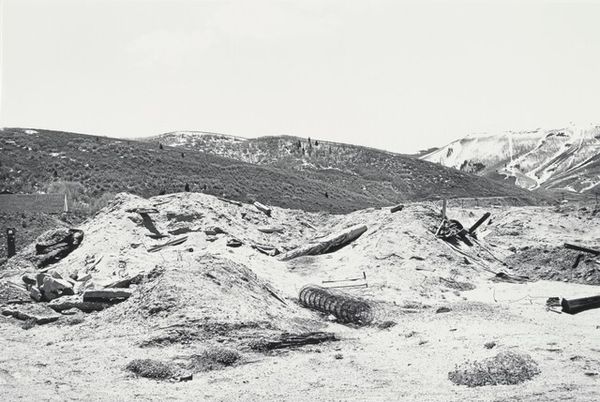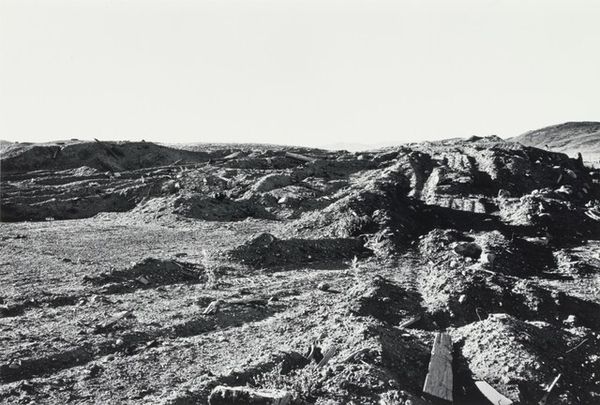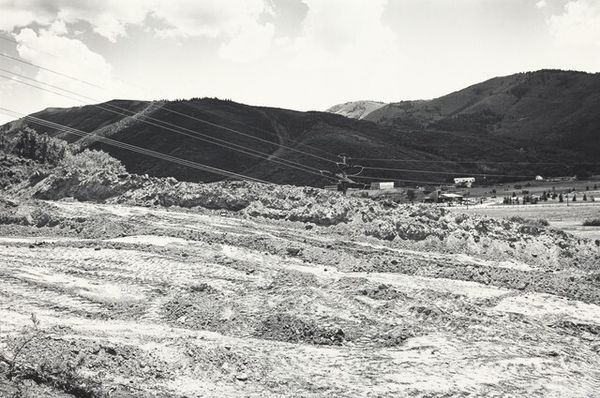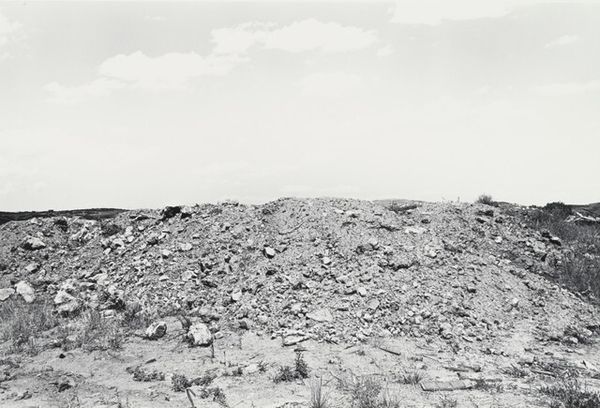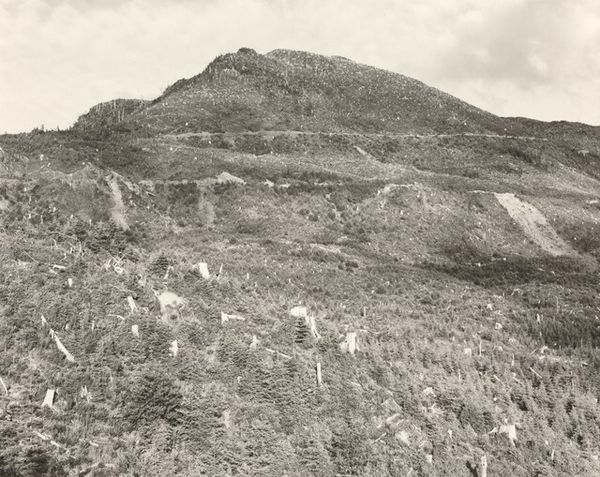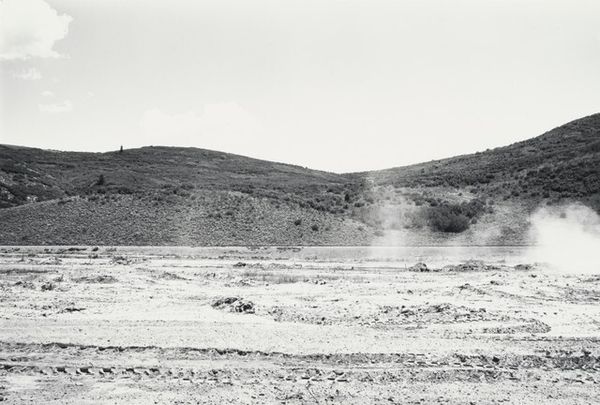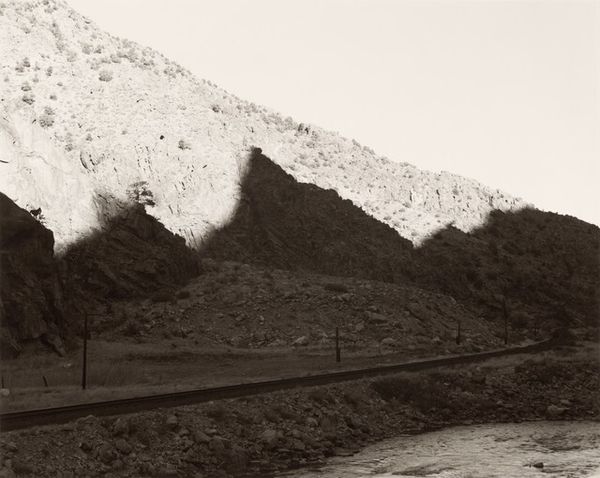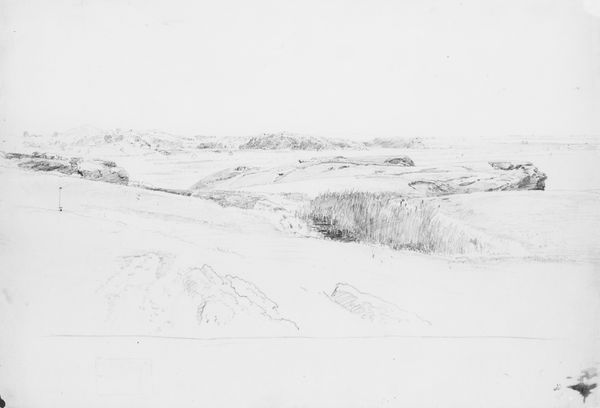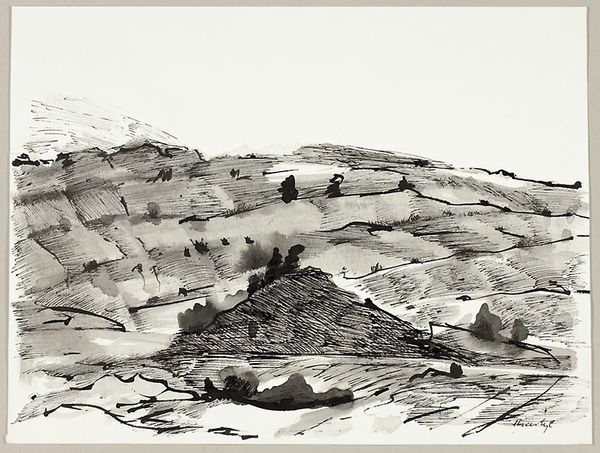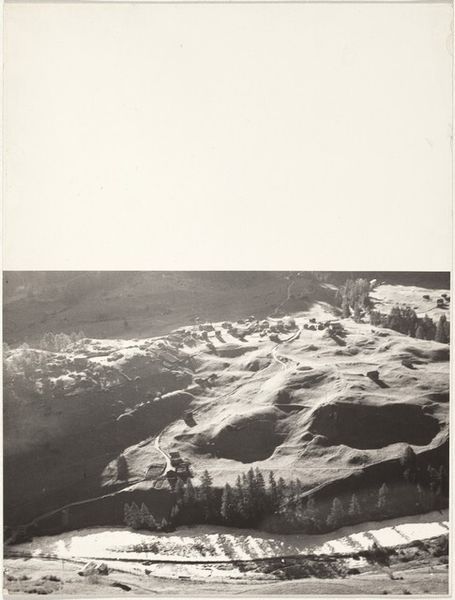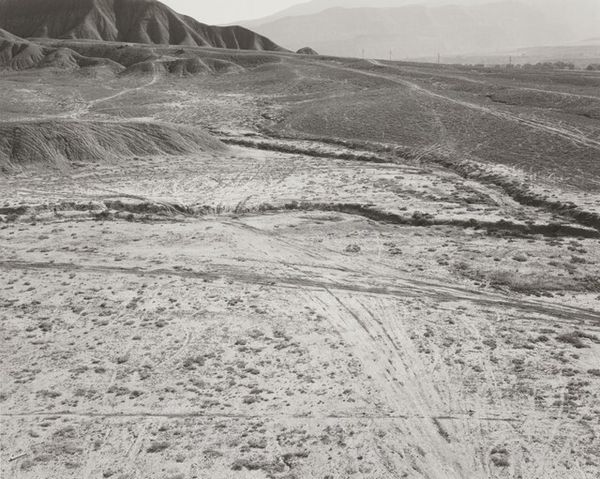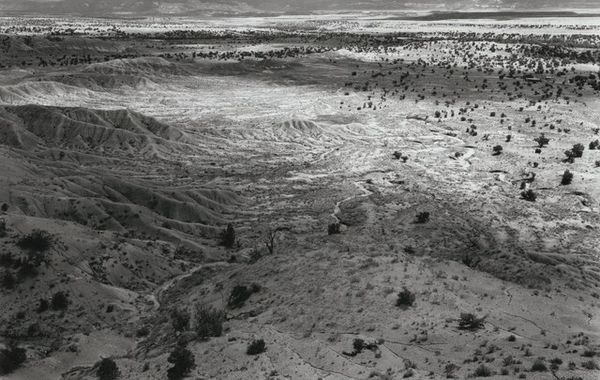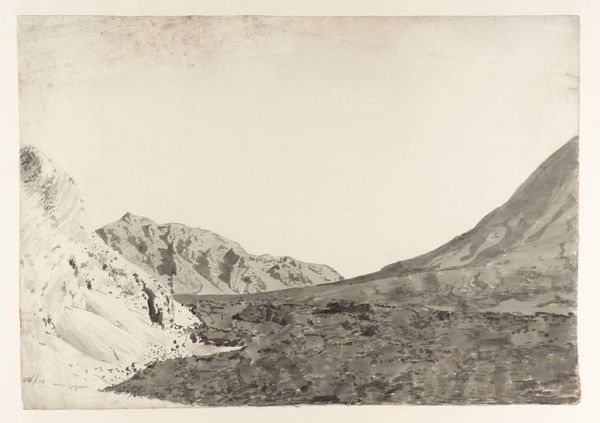
Between West Sidewinder Drive and State Highway 248, Looking Southwest 1979
0:00
0:00
photography, site-specific, gelatin-silver-print
#
black and white photography
#
landscape
#
black and white format
#
photography
#
geometric
#
black and white
#
site-specific
#
gelatin-silver-print
#
monochrome photography
#
monochrome
#
modernism
Dimensions: image: 16.25 × 24.13 cm (6 3/8 × 9 1/2 in.) sheet: 20.32 × 25.4 cm (8 × 10 in.)
Copyright: National Gallery of Art: CC0 1.0
Curator: Let’s examine Lewis Baltz’s stark photograph from 1979, “Between West Sidewinder Drive and State Highway 248, Looking Southwest.” It’s a gelatin-silver print, classic black and white. Editor: Well, my first thought is…bleak. It's got that moonscape vibe, all dirt and rubble under a washed-out sky. Feels like looking at the end of something. Curator: The photograph's composition relies heavily on geometric forms – the angularity of the earth contrasting with the implied lines of the distant hills. Baltz seems interested in revealing the often-overlooked marks of human intervention on the land. Editor: Marks is putting it mildly! It looks like someone tried to bury the landscape alive. But there's a kind of beauty in it, you know? The textures, the gradations of gray...it's strangely compelling, even if it’s saying something uncomfortable. Like, “Hey, look what we did.” Curator: Absolutely. Baltz often explored the theme of the "new industrial landscape," highlighting the tension between natural beauty and the impact of urbanization, the subtleties of land usage and modification. Note the absence of people, creating a sense of isolation. The bleakness amplifies the environmental concerns. Editor: Makes you wonder what that specific spot looks like now, forty years later. Is it condos? Strip malls? Or did nature fight back, green it all over? It is, as you pointed out, a silent yet profound statement about the ways we shape, and often scar, our surroundings. Curator: Indeed. Baltz’s objective approach to his subject is evident here, meticulously documenting a landscape undergoing significant change, inviting us to contemplate our role in this transformation. Editor: You know, despite the initial "bleak" feeling, I’m now getting a sense of resilience from it. Maybe not for the landscape itself in the short term, but in its stubborn existence and potential for something different down the road. Curator: That’s a perceptive reading, suggesting the photograph continues to resonate and invite varied interpretations. Thank you for your insights. Editor: My pleasure, it always interesting looking closer!
Comments
No comments
Be the first to comment and join the conversation on the ultimate creative platform.
